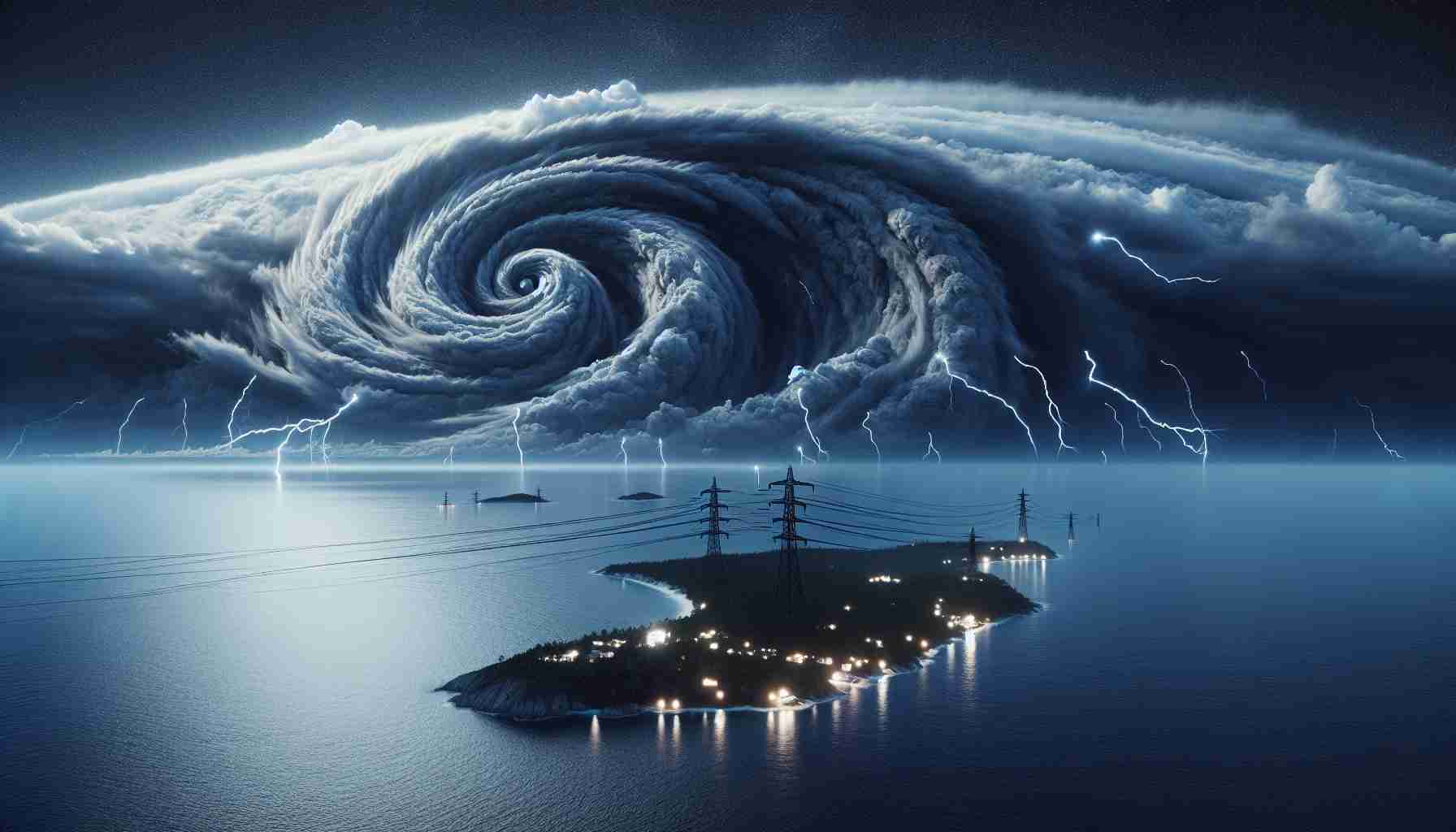
Tropical Storm Threatens Cuba While Electricity Crisis Worsens
Cuba Braces for Impact
As Tropical Storm Oscar approaches the eastern shores of Cuba, officials warn of imminent hurricane-force winds reaching up to 140 kilometers per hour. The looming threat of severe rainfall adds to the concerns, particularly in the Sierra Maestra mountain range close to Santiago de Cuba.
Growing Crisis
President Miguel Díaz-Canel assures the population that the government is mobilizing all resources to safeguard citizens and vital infrastructure. However, the island faces compounding challenges as a massive electricity blackout enters its third consecutive day, leaving nearly the entire nation powerless ahead of the storm’s arrival.
Electricity Woes Persist
Despite some progress in restoring power, with 16% of consumers now connected, generating approximately 500 megawatts, the strain on the system continues to escalate. Havana remains largely dark, except for essential facilities equipped with emergency generators and select private residences with backup systems.
Social Unrest
The ongoing energy deficit exacerbated by external factors such as fuel shortages and an antiquated grid, compounded by recent hurricanes and international sanctions, has pushed Cubans to the edge. Persistent blackouts, lasting over 20 hours daily in some regions, have triggered widespread frustration and protests among residents struggling in darkness.
Chronic Challenges
Blaming a confluence of events including fuel scarcity, surging demand, infrastructure limitations, recent extreme weather, and external pressures, the Cuban government confronts a multifaceted crisis. Longstanding tensions with the US, dating back to the 1960s, have further strained access to vital resources, leaving many Cubans grappling with scarcity and uncertainty in the face of mounting hardships.
New Developments Amidst Crisis
As Tropical Storm Oscar continues its path towards Cuba, meteorologists are monitoring a secondary weather system forming in the Caribbean Sea, raising concerns about potential dual impacts on the island nation. The intricate movement of these weather patterns poses additional challenges for disaster response teams already stretched thin by the ongoing electricity crisis.
Mitigation Efforts Under Strain
With critical infrastructure already compromised by the prolonged power outage, the impending storm threatens to disrupt any progress made in restoring electricity across the country. The government’s ability to coordinate relief efforts, including evacuations and emergency services, is severely constrained by the dual pressures of the impending natural disaster and the persistent energy deficit.
Key Questions and Challenges
1. How will the government manage the overlapping crises of the electricity blackout and the tropical storm?
The authorities are facing a daunting task of balancing response efforts to address both the immediate impact of the storm and the long-term implications of the electricity crisis. Coordination between agencies, effective communication with the public, and resource allocation are critical components of a successful response strategy.
2. What long-term solutions are being considered to enhance Cuba’s resilience to future energy disruptions?
Addressing the underlying causes of the electricity crisis, including outdated infrastructure, fuel shortages, and reliance on central power plants, requires a comprehensive approach that prioritizes sustainable energy sources, grid modernization, and community-based resilience initiatives. However, implementing these changes amidst the current challenges presents a complex policy dilemma.
Advantages and Disadvantages
Advantages:
– The overlapping crises highlight the urgent need for holistic disaster preparedness and response plans that incorporate multiple contingencies.
– Increased international attention to Cuba’s challenges may spur collaborative efforts to provide immediate aid and long-term support for infrastructure improvements.
Disadvantages:
– The compounding nature of the crises amplifies the strain on limited resources and institutional capacities, risking inefficiencies in crisis management.
– Political controversies surrounding Cuba may hinder the flow of external assistance and exacerbate existing tensions, potentially prolonging recovery efforts.
For further insights on global disaster response strategies and sustainable energy solutions, visit United Nations.

















